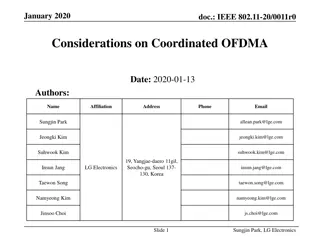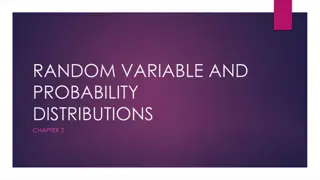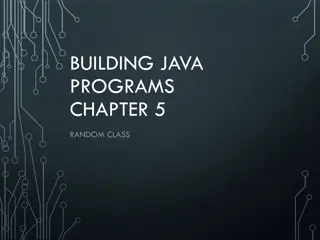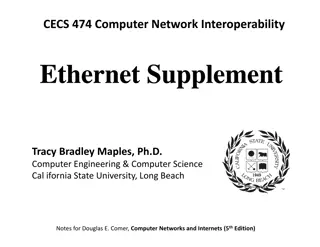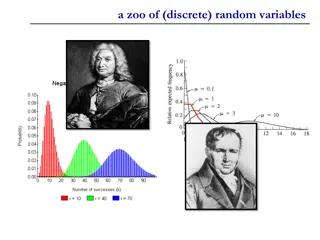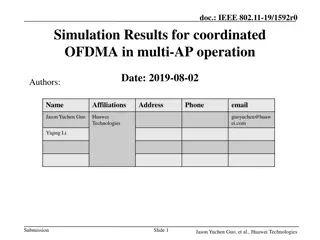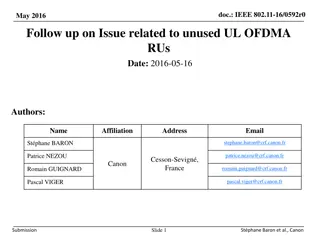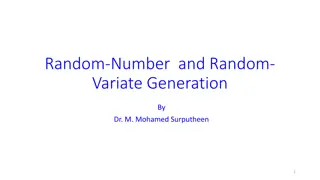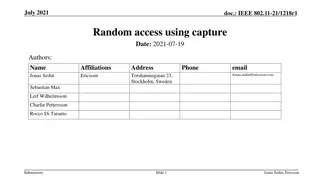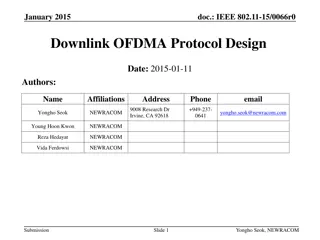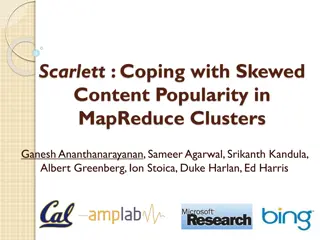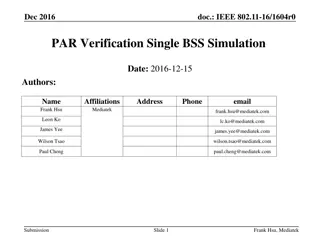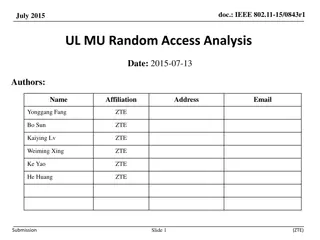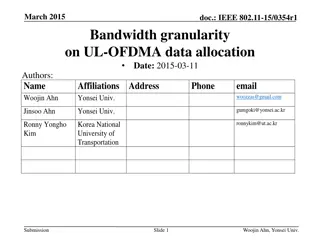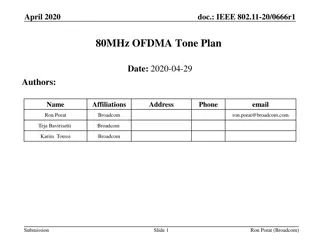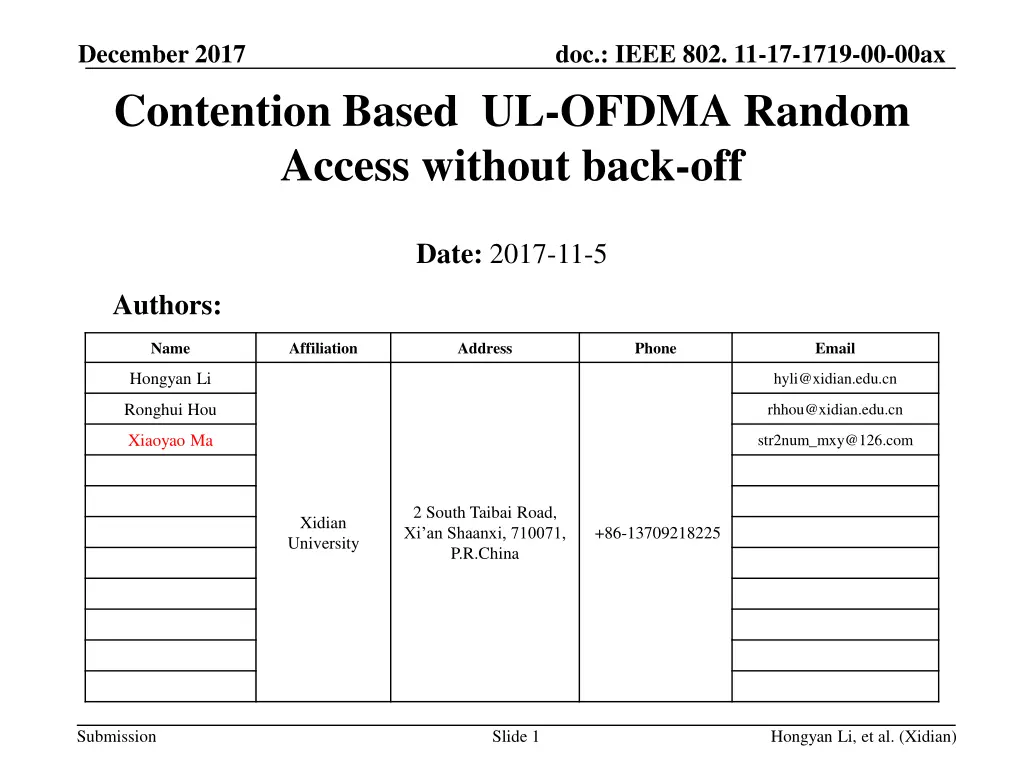
Enhanced OFDMA Multiple Access Scheme for Dense Deployment Scenarios
Explore how an enhanced OFDMA multiple access scheme is proposed to address channel access and transmission challenges in dense deployment scenarios, aiming for higher spectral efficiency and improved regional throughput. The steps involve AP sending UA-Trigger frames, stations selecting time-frequency blocks, and AP allocating resources based on the number of uplink stations.
Download Presentation

Please find below an Image/Link to download the presentation.
The content on the website is provided AS IS for your information and personal use only. It may not be sold, licensed, or shared on other websites without obtaining consent from the author. If you encounter any issues during the download, it is possible that the publisher has removed the file from their server.
You are allowed to download the files provided on this website for personal or commercial use, subject to the condition that they are used lawfully. All files are the property of their respective owners.
The content on the website is provided AS IS for your information and personal use only. It may not be sold, licensed, or shared on other websites without obtaining consent from the author.
E N D
Presentation Transcript
December 2017 Contention Based UL-OFDMA Random Access without back-off doc.: IEEE 802. 11-17-1719-00-00ax Date: 2017-11-5 Authors: Name Affiliation Address Phone Email Hongyan Li hyli@xidian.edu.cn Ronghui Hou rhhou@xidian.edu.cn Xiaoyao Ma str2num_mxy@126.com 2 South Taibai Road, Xi an Shaanxi, 710071, P.R.China Xidian University +86-13709218225 Submission Slide 1 Hongyan Li, et al. (Xidian)
December 2017 doc.: IEEE 802. 11-17-1719-00-00ax Introduction Following the research status of the next generation WLAN, we regards the research of OFDMA based multiple access and the design of prototype system as the focus and try to solve the problem of channel access and transmission in dense deployment scenarios to achieve higher spectral efficiency and better regional throughput. In this contribution, an enhanced OFDMA multiple access scheme is proposed. The comparison is shown in the simulation. Submission Slide 2 Hongyan Li, et al. (Xidian)
December 2017 Contention Based UL-OFDMA Random Access without back-off doc.: IEEE 802. 11-17-1719-00-00ax Step 1: AP send a UA-Trigger frames in each subchannel simultaneously to inform stations of uplink transmission. Frequency C 6 STA1 UA-Trigger C 5 STA9 STA6 UA-Trigger C 4 UA-Trigger C 3 STA5 Collision UA-Trigger C 2 STA4 STA10 UA-Trigger C 1 STA7 UA-Trigger Time UL-OFDMA Random Access Submission Slide 3 Hongyan Li, et al. (Xidian)
December 2017 Contention Based UL-OFDMA Random Access without back-off doc.: IEEE 802. 11-17-1719-00-00ax Step 2 :Once received UA-Trigger frame, All the stations select a time- frequency resource block to transmit an UA-response frame to request uplink access. Frequency Multi- STA BA Multi- STA BA Trigger UL DATA(STA 1) UL DATA(STA 1) C 4 Padding Multi- STA BA Multi- STA BA ... Trigger UL DATA(STA 3) UL DATA(STA 2) C 3 Padding Multi- STA BA Multi- STA BA UL DATA(STA 4) C 2 Trigger UL DATA(STA 6) Multi- STA BA Multi- STA BA C 1 UL DATA(STA 5) Trigger Time Submission Slide 4 Hongyan Li, et al. (Xidian)
December 2017 Contention Based UL-OFDMA Random Access without back-off doc.: IEEE 802. 11-17-1719-00-00ax Step 3: -AP receives UA-Response frames and counts the number of uplink transmission stations. -According to the number of uplink-stations , AP sends Trigger frame in each subchannel to allocate time-frequency resource to uplink-stations. Frequency Multi- STA BA Multi- STA BA Trigger UL DATA(STA 1) UL DATA(STA 1) C 4 Padding Multi- STA BA Multi- STA BA ... Trigger UL DATA(STA 3) UL DATA(STA 2) C 3 Padding Multi- STA BA Multi- STA BA UL DATA(STA 4) C 2 Trigger UL DATA(STA 6) Multi- STA BA Multi- STA BA C 1 UL DATA(STA 5) Trigger Time Submission Slide 5 Hongyan Li, et al. (Xidian)
December 2017 doc.: IEEE 802. 11-17-1719-00-00ax Simulation Comparison between current DCF and UL-OFDMA random access. Parameter Value Num of STA The num of sta increment from 40 to 120 by 20. Normalized Throughput Num of sub-channel 8 Num of slots 10 Bandwidth of sub- channel 20MHz Bandwidth 160MHz PHY Rate (Mbps/ 20MHz) Our method can increase the throughput by 73.33% compared to current DCF. Submission Slide 6 Hongyan Li, et al. (Xidian)
December 2017 doc.: IEEE 802. 11-17-1719-00-00ax Conclusion In this presentations, we introduce a method called Contention Based UL-OFDMA Random Access without back-off to improve the network s performance in dense scenario. Performance of UL-OFDMA Random Access without back-off and DCF has been compared. Submission Slide 7 Hongyan Li, et al. (Xidian)


